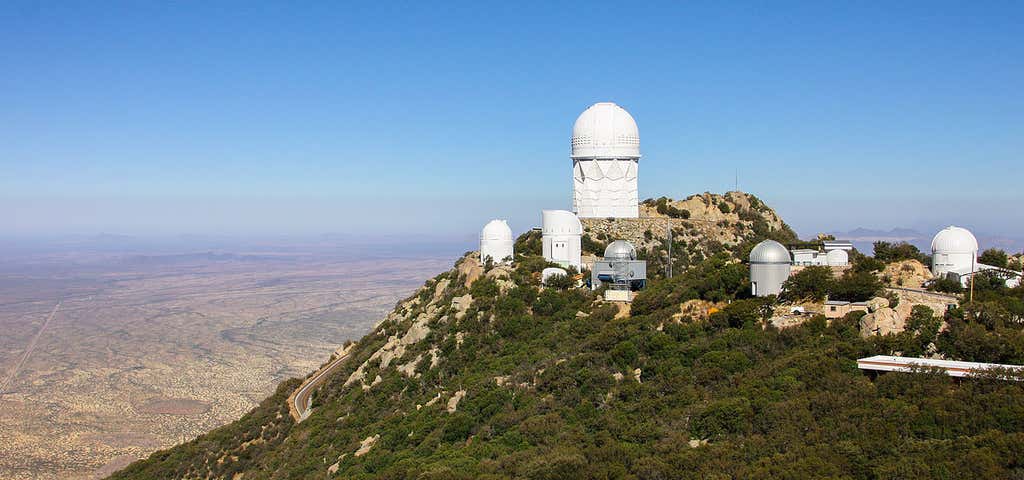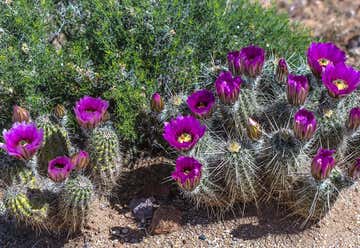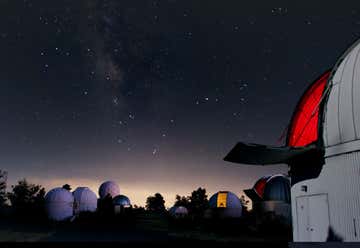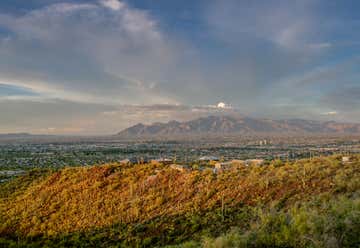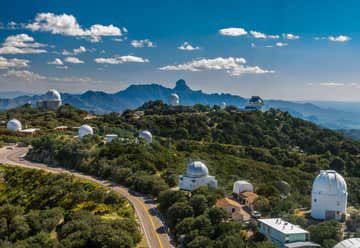The Sonoran Desert around Tucson is a special place. Not only is it stunningly beautiful, it's also the native habitat for the iconic saguaro cactus. It's the only place in the world where you can see wild saguaro, which grow up to 40 feet tall and live to 150 years old, on average. It's not hard to spend a day exploring various gardens in the desert and marveling at these rare giants. But once the sun sets on the Sonoran, the stunning views don't end. The desert is also famous for crystal clear dark skies that provide some of the best stargazing in the country. There are a plethora of observatories where beginners can get the scoop on spotting the Milky Way and distant planets.
The main feature at Kartchner Caverns State Park is, naturally, the 2.4-mile-long "living" limestone cave. Careful management and a lot of fancy equipment (like air-lock doors and misting machines) have gone into developing and preserving the passageways and tunnels, so the public can enjoy guided tours of the caverns for years to come. As you explore, pay attention to the cave formations (or speleothems). These are created from calcite-rich water as it drips, pools, flows, seeps, and condenses in the cave. Catch one of the world's longest soda straw stalactites, which stands 21 feet tall. See the state's tallest and largest cave column, the 58-foot-tall Kubla Khan, along with brushite moonmilk, “turnip” shields, “birdsnest” needle quartz formations, totems, helictites, rimstone dams, and more.
Above ground, you'll find wildlife, campgrounds, and lots of hiking trails, but stick around after the sun sets for some stellar stargazing. The International Dark-Sky Association (headquartered in Tucson) has designated Kartchner Caverns a silver-tier dark-sky park, and amateur astronomers from all over bring their telescopes to take advantage of the views. The reputation didn't come easy, either. The park has a strict lightscape management plan and raises awareness about light pollution and protecting dark skies.
Another state park where amateur astronomers set up their gear is Oracle State Park. This wildlife refuge is set in the northern foothills of the Santa Catalina Mountains, and offers a variety of awesome hikes, as well as unobstructed and unpolluted views of the night sky. It's an international dark-sky park, and though you won't even need a telescope to admire the Milky Way and various other constellations and objects in the sky, this is one of the best places to make excellent use of stargazing gear. It's worth a visit during daylight hours as well, especially to check out the historic Kannally Ranch House, built in the 1920s. The house now serves as museum and visitor center for the park, complete with a gift shop, period furnishings, and old photography.
If you want to see reeeally deep into the universe, head to the Mt. Lemmon SkyCenter Observatory. The Observatory is notable for its unique location (Mt. Lemmon's summit is what's known as a "sky island," a mountain surrounded by flat terrain) and for being home to two of the Southwest's largest telescopes. There are two main ways to take advantage of the incredible views and equipment here. The observatory offers day tours with solar viewings, which last about two hours, and SkyNights StarGazing most Thursday through Sunday nights. The evening programs last about five hours and include an astronomy lecture, dinner, stellar sunset views, and a guided navigation of the night sky with the chance to use one of the big telescopes. Plan to reserve a spot for whichever tour you like in advance.
During the day, if you’re looking or a place to immerse yourself among native Sonoran Desert fauna, Tucson Botanical Gardens is a perfect option. Tucked among the various gardens are, of course, plenty of saguaros, but the gardens also highlight the massive variety of plants that can be grown in Tucson, like herbs, aloes, succulents, cacti, and more. Learn how to attract birds and pollinators like butterflies and bees, and explore the greenhouse, loaded with tropical species like orchids, hibiscus, bromeliads and more. There's also a great children's garden that teaches kids about the life cycle of plants, and a gift shop.
Telescopes are rad, but we can't forget about other ways to see the stars... like planetariums. The University of Arizona Flandrau Science Center and Planetarium offers displays on topics ranging from fossils and minerals to Mars and the Solar System, making it the perfect stop for the curious-minded. The state-of-the-art Eos Foundation Planetarium Theater is a must-visit. Tour the universe, learn all about black holes, dive into undiscovered worlds, or go classic with a program on the Tucson night sky, which gives a guided tour of the stars, constellations, and planets that reveal themselves once the sun sets. And yes, the Flandrau offers laser shows as well.
Back in the desert, if you're looking for a quiet place to study nature on your own, check out the Desert Botanical Laboratory. This National Historic Landmark on Tumamoc Hill has been a place to study the ecology of the desert since 1903. Some of the plants here are part of the world's oldest permanent ecology study quadrants, established in 1906. The laboratory is now operated by a program called Tumamoc: People & Habitats, as a part of The University of Arizona College of Science. The University's Department of Astronomy operates the small Steward Observatory atop the hill. The site was sacred to the ancient Hohokam people, and retains evidence of thousands of years of human history, from petroglyphs to burial sites. The public can visit any time except between 7:30 a.m. and 5:30 p.m. Mondays through Fridays. Pro tip: To enhance your trek up this iconic hill, you can find a tour app and bonus information from the University of Arizona College of Science that helps you explore the hill's 4,000-year-old human history, and hear about the others who that have made the same trek over time each step of the way.
The Arizona-Sonora Desert Museum is a lot of things: a zoo, a botanical garden, an art gallery, a natural history museum, and even an aquarium--all spread across 98 acres of desert, almost entirely outdoors, so you can feel truly one with the desert as you explore. Two miles of walking paths highlight some unique features of the Sonoran Desert, including 230 animal species, more than a thousand different kinds of plants, and a huge cache of minerals and fossils. There's also an onsite arts institute, complete with a gallery and classes. The whole museum does a great job of blending education, conservation, and art into one incredible experience. Check out The Warden Aquarium for freshwater exhibits on local rivers, hands-on tidepools, and saltwater tanks displaying marine life from the Gulf of California, or explore the recreated underground cave. Also, keep an eye on the times for live animal presentations, guided tours, feedings, and more.
When it comes to stargazing in Tucson, Kitt Peak National Observatory is the creme de la creme. Ground-breaking research is conducted here, thanks to one of the world's largest arrays of optical and radio telescopes. Luckily, there's a visitor center offering a plethora of tours that let you get pretty close to the farthest reaches of our universe. Throughout the day, guided tours of some of the most important telescopes are given, so you can learn all about their science and history. The observatory offers solar viewings during the day as well. Come nightfall, a four-hour observing program helps beginners and pros alike chart constellations and track the stars with binoculars, then use the visitor center's research-class telescopes to see even deeper into space.
The Sonoran Desert is a place of great beauty, but it also seems to hold keys to some of life's greatest mysteries. From petroglyphs left by ancient civilizations, to stately saguaros that have been standing in some of the harshest climates for more than a hundred years, to the chance to peer deep into the unexplored reaches of the universe, the Sonoran is an experience unlike any other.
Banner Photo Credit: Wikimedia Commons/Joe Parks
